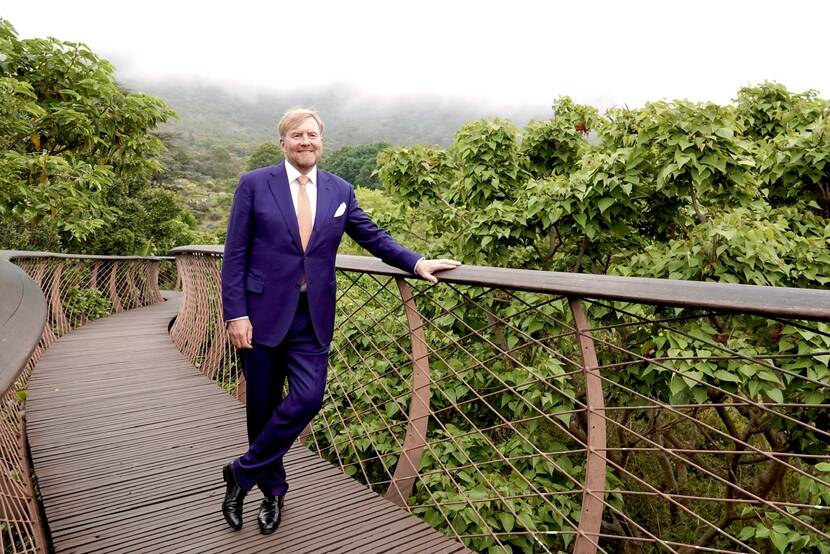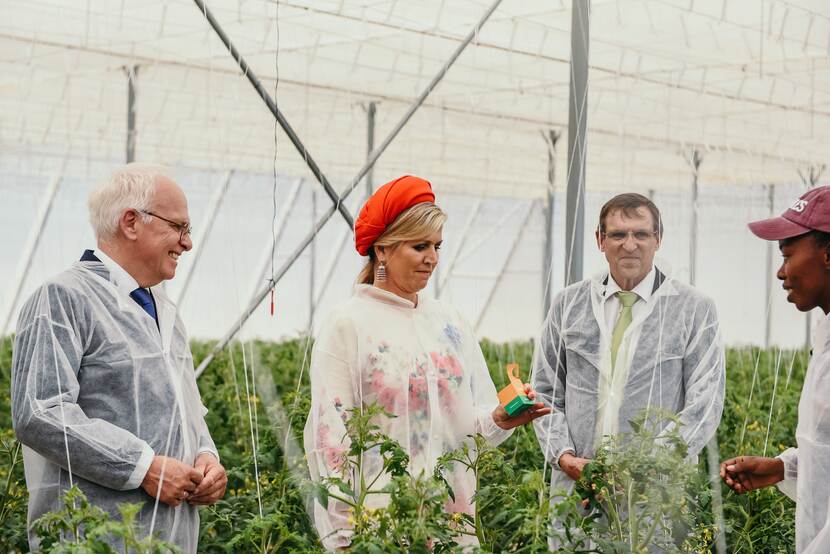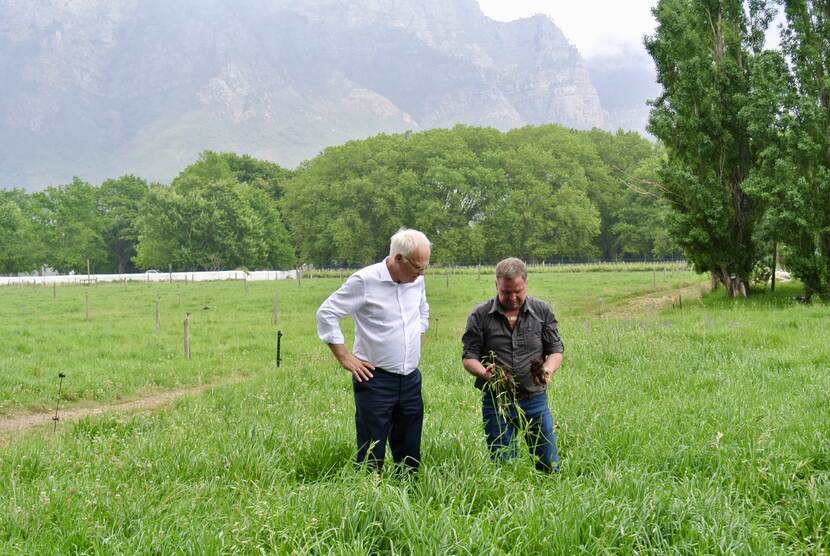State and ministerial visits to South Africa: biodiversity and climate-smart agriculture
On the 18th of October, King Willem-Alexander and Queen Máxima commenced their three-day State visit to South Africa. The visit was complemented by a visit of Minister Adema, Agro DG Guido Landheer and an agriculture economic mission. This visit strengthens South Africa-Dutch relationships, which trace back several hundred years. Although our shared history hasn’t always been an easy one, today we see each other as equal partners and look for opportunities to cooperate. Dutch agriculture history in South Africa traces its roots to the 17th century when Dutch traders used the Cape as a stopover location to refuel and replenish supplies as ships passed onto Asia. The King and Queen paid attention to both agriculture and nature on their state visit, with LAN Pretoria facilitating programme visits to Kirstenbosch National Botanical Gardens and Stellenbosch Horti Demo Centre.

Kirstenbosch National Botanical Gardens
The Royal House and WWF NL have a strong relationship and long history. WWF NL also has strong ties with their counterparts in South Africa. Through this relationship, it was proposed that the King should visit Kirstenbosch National Botanical Gardens to learn more about nature and biodiversity in one of the most magnificent botanical gardens in the world. Although the gardens are under SANBI’s (South African National Biodiversity Institute) jurisdiction, WWF works closely with SANBI and both organisations played an integral role in facilitating this visit by hosting and presenting. Kirstenbosch is renowned for its focus on endemic and indigenous species and the garden plays an important role for the preservation and education of Fynbos vegetation. Fynbos species form part of Cape Floral Kingdom, one of six floral kingdoms in the world. It is the smallest and richest kingdom, and is unique to the Western Cape Province of South Africa. The King had an opportunity to learn about the importance of this biodiversity in discussions with WWF. Biodiversity plays a critical role for the South African economy, and tourism in particular. Many travellers come to see the country’s wildlife, hike its beautiful mountain ranges, and experience its abundant ocean life. This led to discussions around water, with South Africa being a water-scarce country and feeling the effects of climate change more heavily than in Europe. WWF share their extensive knowledge of the strategic water source areas of the country, which make up only 10% of the country’s land area but supply up to 50% of its water. The visit to Kirstenbosch concluded with a conversation on the links between nature, biodiversity and agriculture, as well as aquaculture and sustainable fishing. The speakers were pleasantly surprised by the King’s question and knowledge of sustainable fishing practices.

Stellenbosch Horti Demo Centre
While the King paid a visit to Kirstenbosch, the Queen travelled to the Stellenbosch Horti Demo Centre to see first-hand the developments in climate-smart horticulture and Dutch-South African partnerships. Constructed and managed by a consortium of Dutch and South African organisations, the Horti Demo Centre opened a year ago and has proved to be a successful example of cooperation between our two countries. The greenhouse, which is based at the University of Stellenbosch, is unique: it is adapted to the needs of the South African environment and differs from the glass greenhouses typically found in the Netherlands. Higher roofing provides room for ventilation in the hot South African sun, while rain water harvesting allows the centre to run independently of a borehole or municipal water for 10 months of the year, and plastic coverings reduce the construction costs. These differences make this type of greenhouse a viable option in South Africa compared to more expensive glass alternatives. Here the Queen had an opportunity to learn about these unique features and to engage with students and emerging farmers who are involved in the centre via training, working, research or studies, and to hear their challenges, achievements and benefits. The Queen already has an extensive knowledge on the sector and she asked relevant and well-informed questions, which were well received by the students and emerging farmers.

Visit of the Minister and DG
Alongside the visit of the King and Queen, Minister Piet Adema and Agro DG Guido Landheer paid a visit to the country. Minister Adema’s formal role included leading all three economic missions to the country (agriculture, green hydrogen and circular waste). Some parts of the ministerial programme involved the Royal visit, while others followed the economic mission.
The Minister had the opportunity to attend the Presidential welcome ceremony, which included bilateral discussions between the South African and Dutch delegations. Here, the importance of agriculture between both countries, including trade was highlighted. South Africa plays a key role in Netherlands (and European) food security, while the Netherlands is an important customer for South Africa, sustaining tens of thousands of jobs in the country’s agriculture sector. Additionally, the Minister accompanied the Queen at the Stellenbosch Horti Demo centre, and also paid a visit to Kirstenbosch Gardens.
On the latter part of his visit, Minister Adema had the opportunity to engage with the Minister of Agriculture of the Western Cape, Ivan Meyer, in the Cape Winelands region where presentations by experts and economists painted a detailed picture on the economics of South Africa’s agriculture sector. In the same region, regenerative farmer Charles Edmonds of Boschendal, the second oldest wine farm in the country, welcomed the minister and DG to his farm. Here he shared his knowledge and experiences of the transition to regenerative farming and the 1.5 year process to restore his soil. Edmonds has witnessed the numerous positive environmental impacts, including reduced flooding on the farm due to the soil’s ability to retain more moisture. Soil samples taken from the start of his regenerative journey compared to now demonstrate the stark contrasts in soil health. These examples and the benefits are a source of inspiration to Dutch farmers who are considering the switch to regenerative farming.
Parallel economic mission
The minister and DG also attended various visits on the economic mission, which you can read more about in the economic mission article. This included the kick-off visit to AG Horticulture where he was able to engage with students and learn about their experiences, challenges and opportunities in South Africa.
It was a busy week with back-to-back schedule for the LAN team, managing a royal programme, minister’s programme, as well as economic mission. Yet,it was also a very successful week with positive feedback from the companies, concrete leads, interesting visits for the Royal Couple and much to learn for the Minister.
For more information contact pre-lnv@minbuza.nl